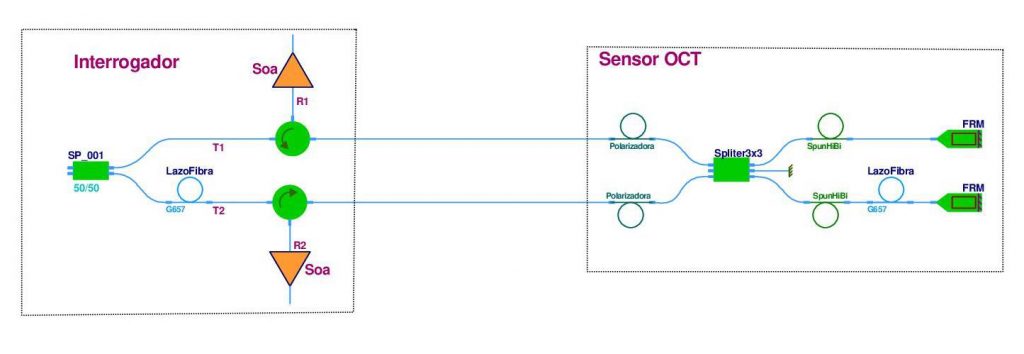Objective
The main objective of this project is to design and develop precise optical amplification technology to reduce the number of fibres required and to increase the distance between the location of passive sensors and the interrogating equipment.
This project will enable the application of light power amplifiers (EDFA – Ebrium Fibre) in the systems that LUMIKER installs for the supervision of long-distance mixed power transmission lines.
This type of asset is being implemented in Europe for electricity interconnection between the different member states and enables progress towards a decentralised model between the points of generation and the points of consumption. Therefore, this technology is key to the implementation of renewable generation points (wind, marine, solar), which can serve cross-border territories, thereby achieving a significant reduction in greenhouse gas emissions.
Project characteristics
Due to the high degree of complexity involved in a single fibre, the desired result will be two interconnecting fibres. This reduction in fibres means poor measurement accuracy, due to the splitting of the signal through the multiplexer, so the signal-to-noise ratio must be improved. To achieve technical success, two different methods are proposed:
Increasing the emission power of the measuring light
For the measurement, light pulses are used from the interrogator (data acquisition device), multiplexed in time, and distributed in power through the network of sensors deployed. This increase in emission power is one of the keys to the project, given that it aims to carry out this amplification with passive systems, which do not require auxiliary power, a totally essential condition in this type of measurement system. These semi-distributed amplification mechanisms will mean the generation of a new patent within the development of LUMIKER.
Improving signal reception
Currently, there is a tendency to seek a minimum number of interconnection fibres, which means a division of power due to multiplexing that entails using very low light powers. This is associated with low signal-to-noise ratios, which makes it difficult to differentiate between the noise and the signal, making measurement more difficult and leading to a loss of precision. To achieve this objective, there are various ways of improving signal reception; in this project, three different ways have been proposed. This new technology is a differential element within the systems developed by LUMIKER and in the international market. In addition, it should be noted that this project responds to the following business objectives:
- To increase Lumiker’s competitiveness compared to other companies in the same sector thanks to the launch of new generation products with high added value.
- To achieve Lumiker’s leading position in measuring devices through this new development, which will have a significant technological impact on the market.
- To achieve a substantial improvement in the service offered by Lumiker by providing high intangible added value through the development of the new technology necessary to reduce the number of fibres required for the interconnection between passive sensors and data acquisition installations.
- Increasing the know-how of the company’s technical staff, providing it with greater technical capabilities for the development of future highly innovative projects which, also contribute to boosting the company’s prestige in terms of Research and Development.
- To consolidate the company’s key strategies: internationalisation, constant innovation, and sustainable growth.
- Improve the company’s products by integrating additional functionalities to cover the new needs of the sector, thus positioning the company in a privileged position at the forefront of the sector.


